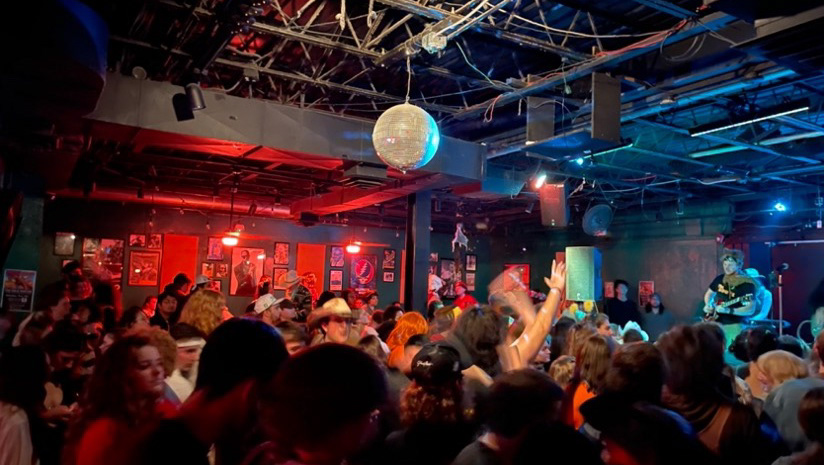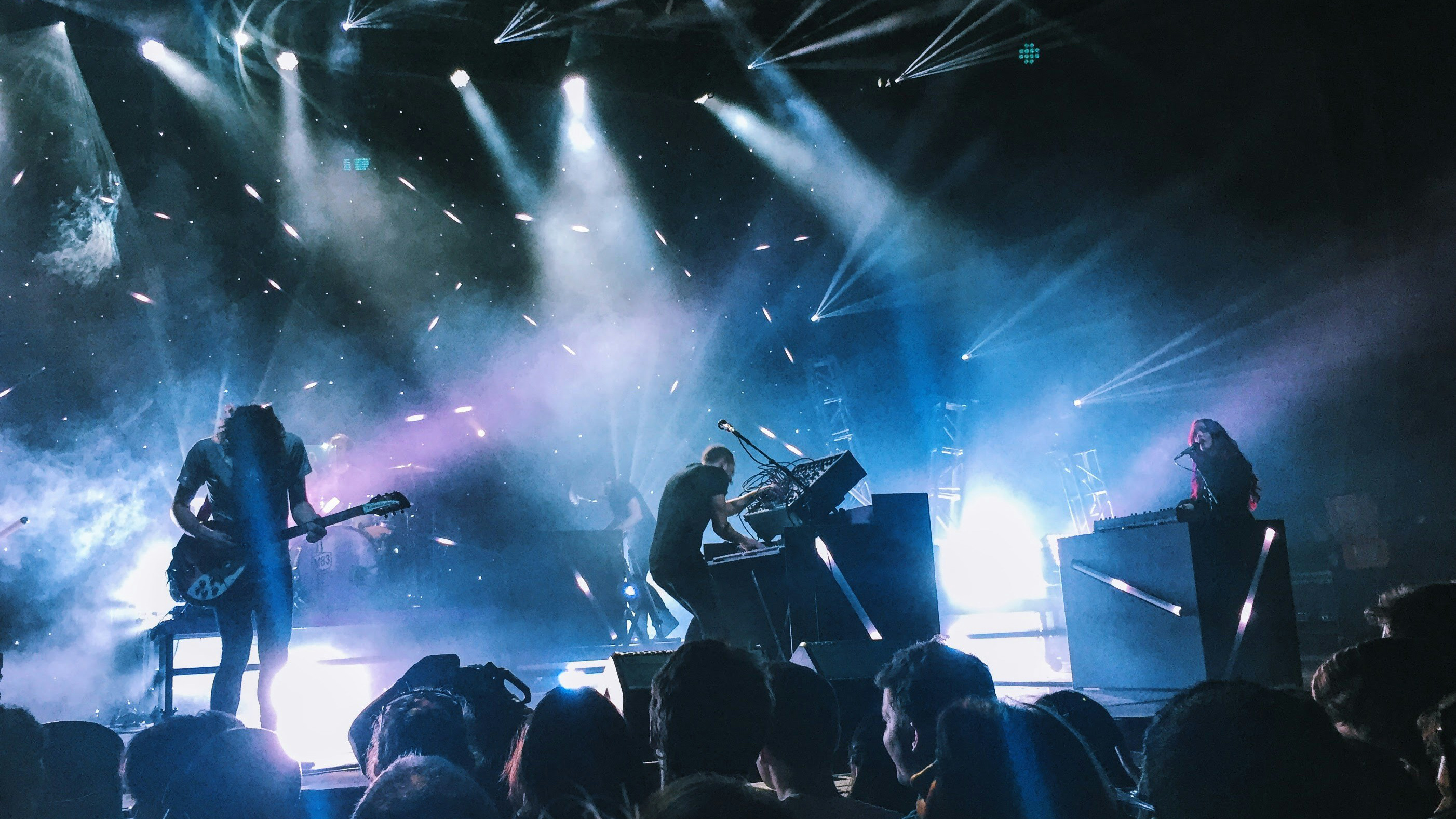Originally Written December 2, 2021
How excessive music plagiarism lawsuits devalue the art form
The trend of popular musicians receiving lawsuits for stealing commonplace musical elements sets a dangerous precedent for how the creative process is legally defined.
“There are all sorts of different functions that borrowing can play in music,” said Scott Hanenberg, instructor of music theory and music technology at Virginia Tech. “It’s not always a clear-cut case of ‘I did something that’s similar to what someone else did, therefore I’m robbing them.”’
The Olivia Rodrigo song “Good 4 U” features loud electric guitars, a fast tempo and lyrics describing female teenage angst following a breakup. Among the songwriting credits on the track, along with Rodrigo and co-writer Daniel Nigro, are certain members of the pop-punk group Paramore. They were retroactively given songwriting credits on the chart-topping hit after many noted a resemblance to the band’s 2007 song “Misery Business,” which shares a chord progression and musical elements with “Good 4 U.”
According to Variety, singer Katy Perry was ordered to pay $2.8 million in damages to little-known rapper Flame over an 8 note synth riff used in her song “Dark Horse.” However, the decision was overruled on March 17, 2020.
Rock band Yellowcard filed a $15 million lawsuit against rapper Juice WRLD over a descending vocal melody in his song “Lucid Dreams.” The band continued with legal action following Juice WRLD’s December 2019 death before dropping the lawsuit in July 2020.
The rise in music plagiarism lawsuits is dangerous because it ascribes prevalent musical techniques to a single entity and it places songwriters and musicians in jeopardy, in that any two songs that share a quality can be set against each other.
Music copyright lawsuits are not a new phenomenon per se. George Harrison lost a case in 1981 regarding his song “My Sweet Lord,” and Ray Parker Jr. settled out of court with Huey Lewis regarding plagiarism between “Ghostbusters” and “I Want a New Drug” in 1985.
However, the inception of the current uptick of cases can be attributed to a 2013 lawsuit asserting that Robin Thicke’s “Blurred Lines” copied “Got to Give It Up” by Marvin Gaye.
According to Rolling Stone, the verdict insinuated that indefinite properties like a song’s tempo, groove and vibe are protected under copyright law. These abstract properties are ones that any number of unconnected songs can share. The “Blurred Lines” lawsuit broke down the barriers for what could be seen as definitive elements of a particular work.
A song can have no elements directly in common with another work, and a claim can still be put against the infringing song if it evokes a similar feeling or vibe to that other recording. However, the law doesn’t recognize that the feeling and experience one receives from interacting with a creative work is entirely dependent on the observer. A musician can be forced to hand over publishing royalties, expensive payments, or songwriting credits on a song if a select group of people, not including the musician, have similar subjective feelings towards a previous work.
“There is a spectrum between two musical things that are identical, two musical things that are similar and different, and two musical things that are completely unrelated to each other,” said Hanenberg. “It feels like the job of the law in this conversation is to quibble about where exactly on that spectrum does something fall, and where exactly on the spectrum are we comfortable with something falling, and then say that it’s stolen or that it’s unique and original.”
In the wake of the landmark “Blurred Lines” lawsuit, it can be hard to quantify exactly what counts as copyright infringement, what techniques are legal and available to those wishing to use the work of others, and most importantly what can be seen as belonging to another artist.
According to the Cardozo Arts & Entertainment Law Journal, to win a copyright infringement case, a prosecutor must show tangible proof of plagiarism, or prove plagiarism occurred indirectly by citing that both contact with the previous work occurred and that both pieces are substantially similar.
Tangible proof can come in the form of a lifted melodic line or harmonic element, but it can also include samples and interpolations.
A sample is a replaying of a song’s recording, occasionally altered to further place it in a different context than intended. An interpolation is a recreation of a song’s element and includes both faithful recreations and examples where an existing melody is put to new lyrics. If a sample or interpolation is uncredited or not cleared through the owners, then it counts as tangible proof.
“People interpolate to kind-of credit, more so, or provide homage, but people sample to repurpose and transform into a different work,” said Orlando LaPaz, independent musician.
When it comes to if a work is substantially similar, the vague language is open to different interpretations. The issue is that abstract musical qualities that are present in many works are being used to fill the substantially similar requirement.
According to the New York Times, “The long continuum of pop revisits sonic approaches, melodies, beats and chord progressions time and again. It demands that each song be wholly distinct from everything that preceded it, an absurd and ultimately unenforceable dictate.”
When a court of law asserts that a work has plagiarized another, there’s an implication that the plaintiff, in a way, created what has been stolen. With regards to the recent rise in music copyright lawsuits, particularly cases dependent on questionable arguments of substantial similarity, it alleges that certain music fundamentals were invented by an individual artist.
It should not be hard to see why that is an issue when it comes to the creative process.
This leaves musicians, songwriters and creatives in a position where one needs to traverse carefully and put in due diligence to prevent a lawsuit.
One way to avoid a copyright lawsuit as an indie musician is to use anonymity to your advantage. You can take solace in the fact that people don’t know you and won’t often go through the trouble to file a claim, whether that be for plagiarism or uncleared samples.
“I see it as an issue of practicality and also enforcement, depending on the platforms you’re on for example, they might not go out of their way to sweep for copyright infringement,” said LaPaz.
Famous musicians will be targeted more often because a popular song will provide a larger monetary payout for the infringed party compared to a smaller song by an unsigned artist. However, independent musicians and big artists are subject to the same laws and the same issues with subjectivity and abstract musical elements. A platinum-selling pop artist might not go bankrupt over a million dollar copyright suit, but it might be true for a musical artist with a hundredth of the pop star’s fanbase for even a hundred thousand dollar fee.
All things considered, there needs to be something in place that can protect all creatives from a flimsy but legally viable copyright lawsuit. Regardless of a musician’s stature, these cases make it difficult for artists to express themselves and they halt the creation of new culture all in the name of an easy profit; a profit at the expense of both the creator and listener.
“I feel like the approach of the artist to making their art is to play with ideas, to take in things that inspire them, to collect sounds that they like from all of their experiences and the more restrictive the law is about what counts as borrowed or stolen or however you want to see it, the more we’re inhibiting people’s artistic impulse,” said Hanenberg.







